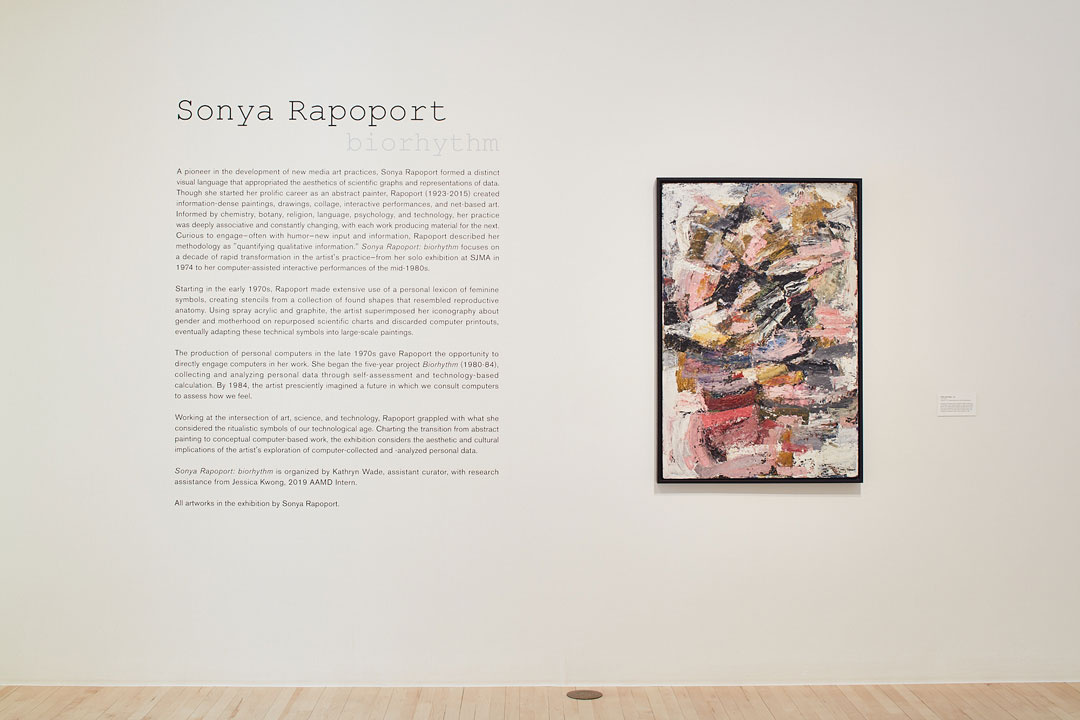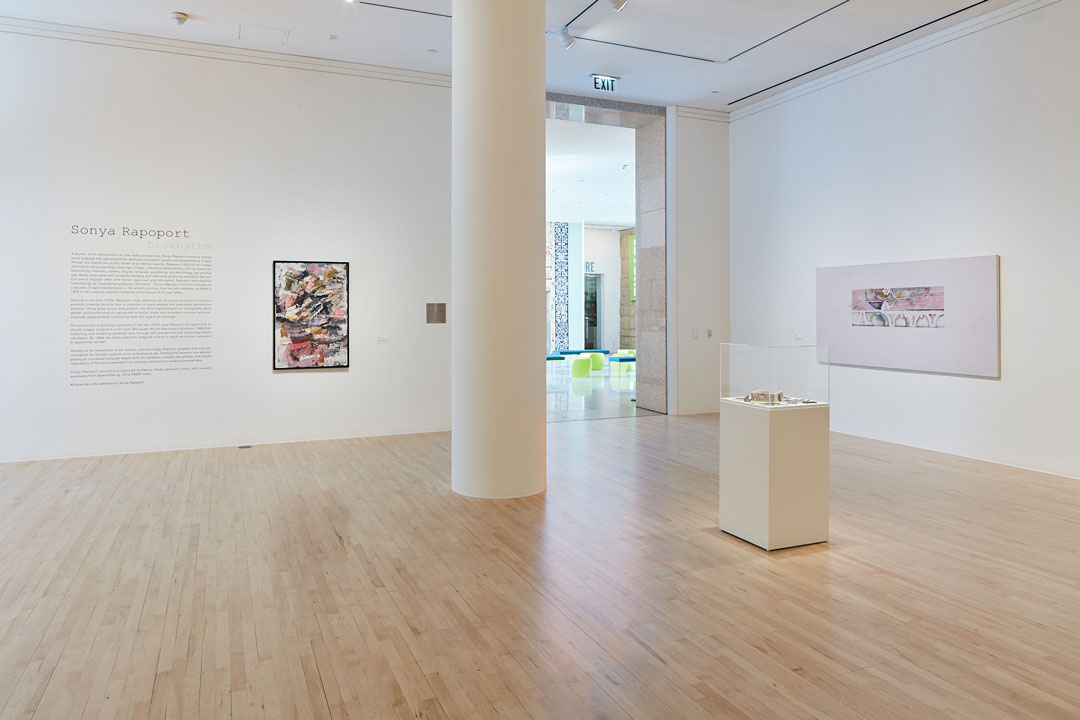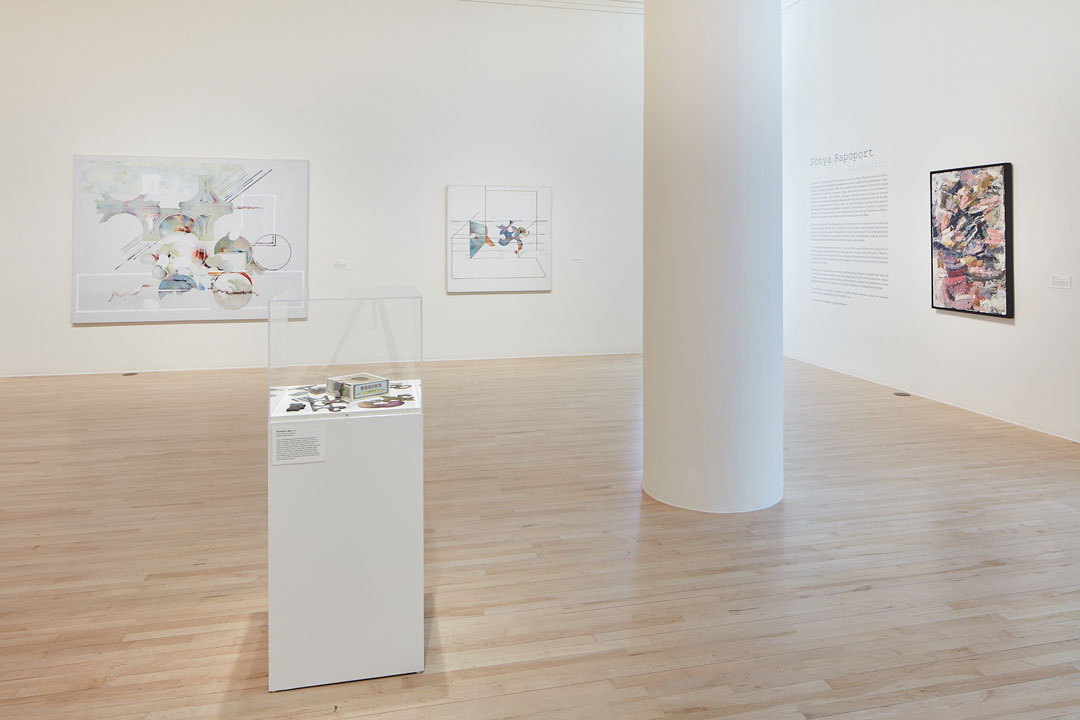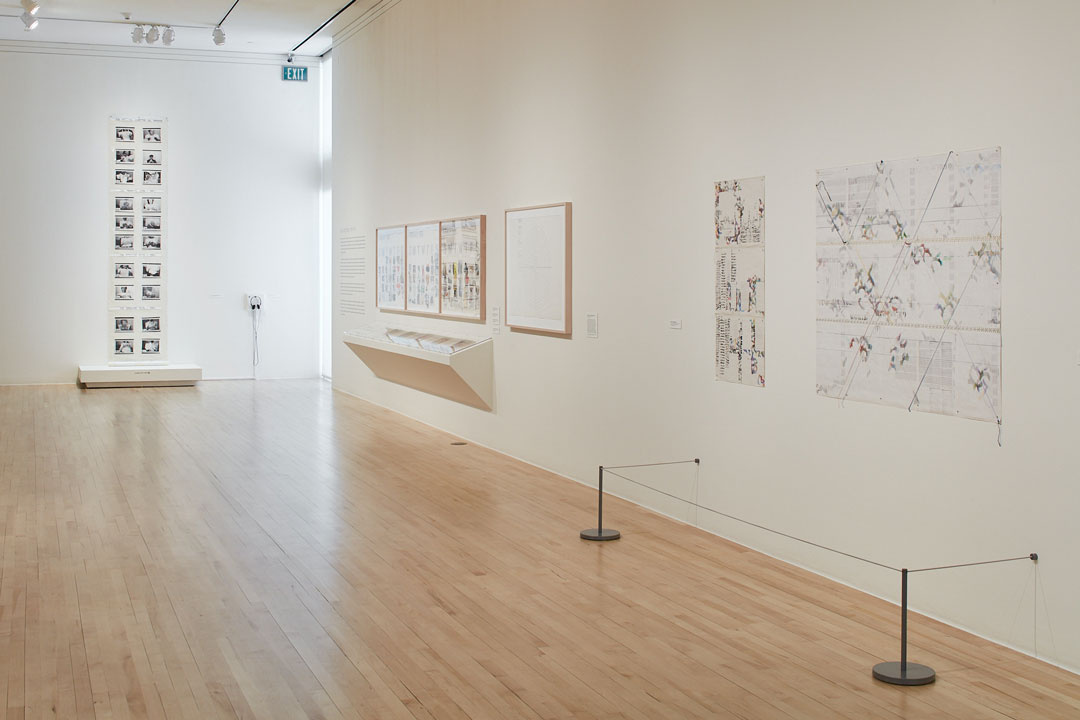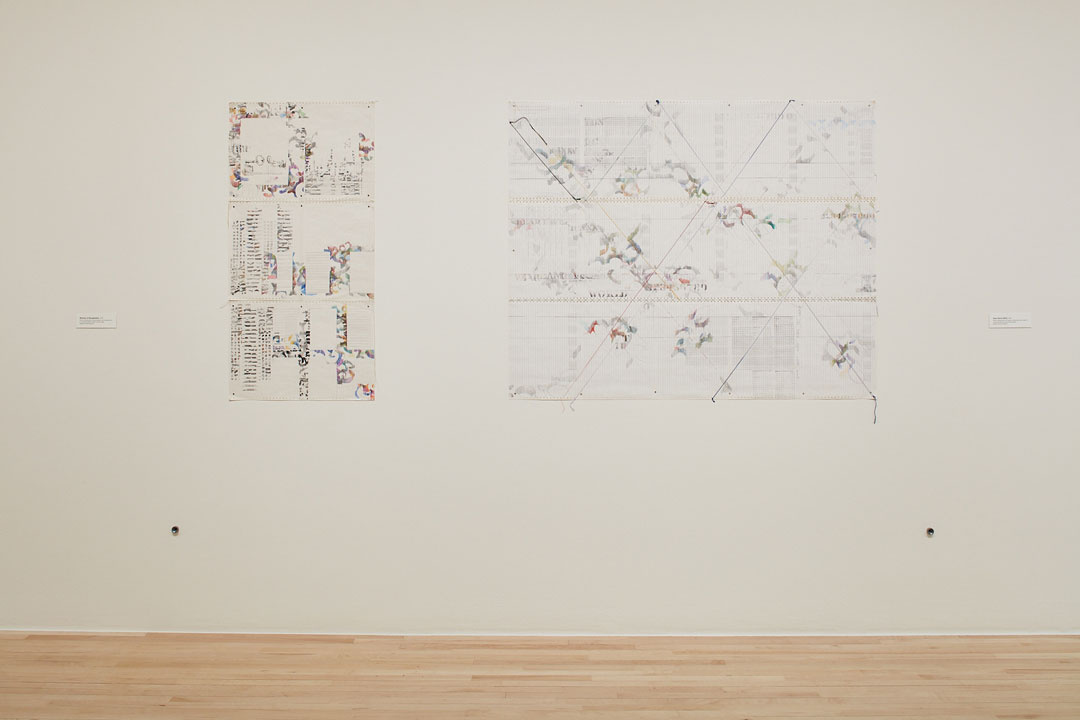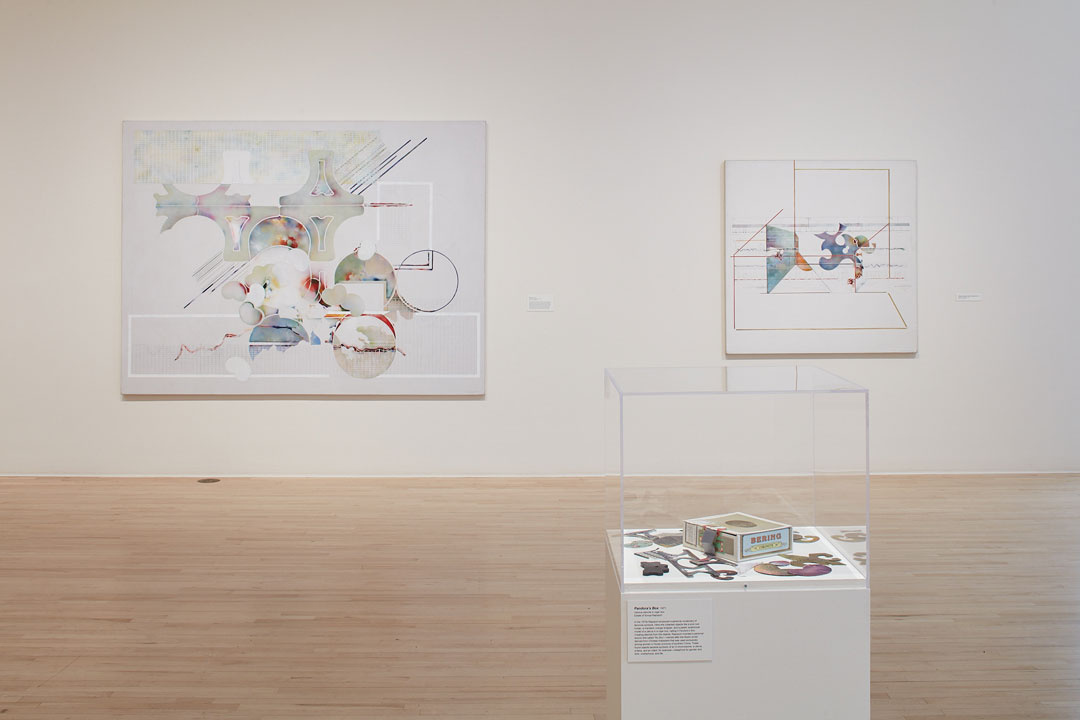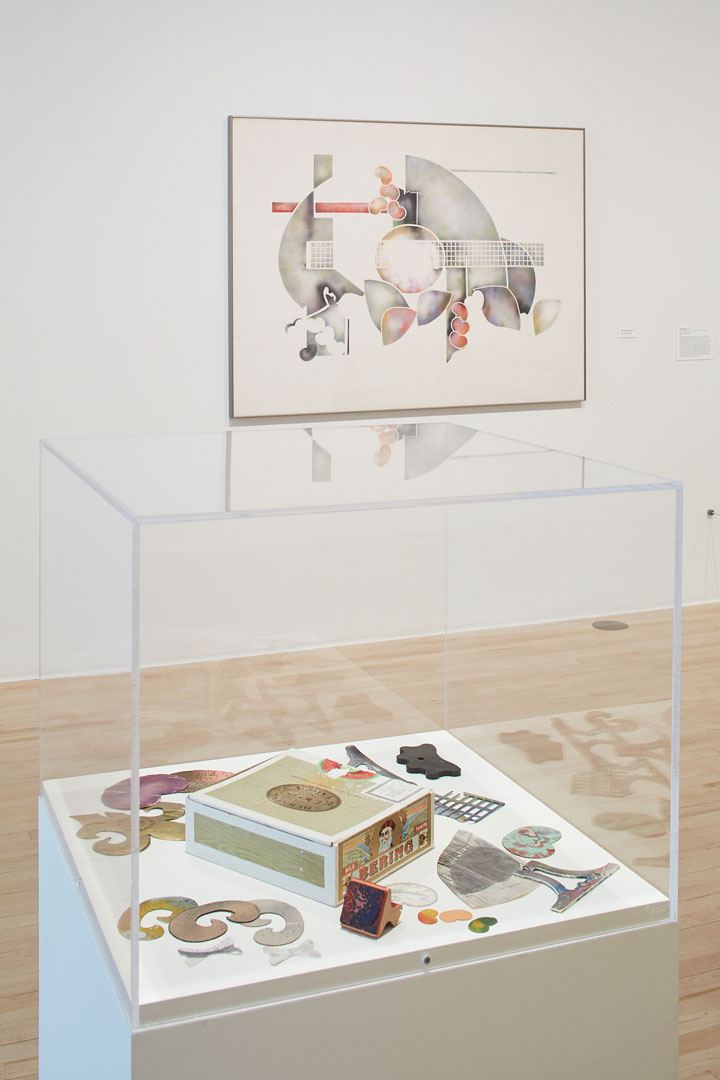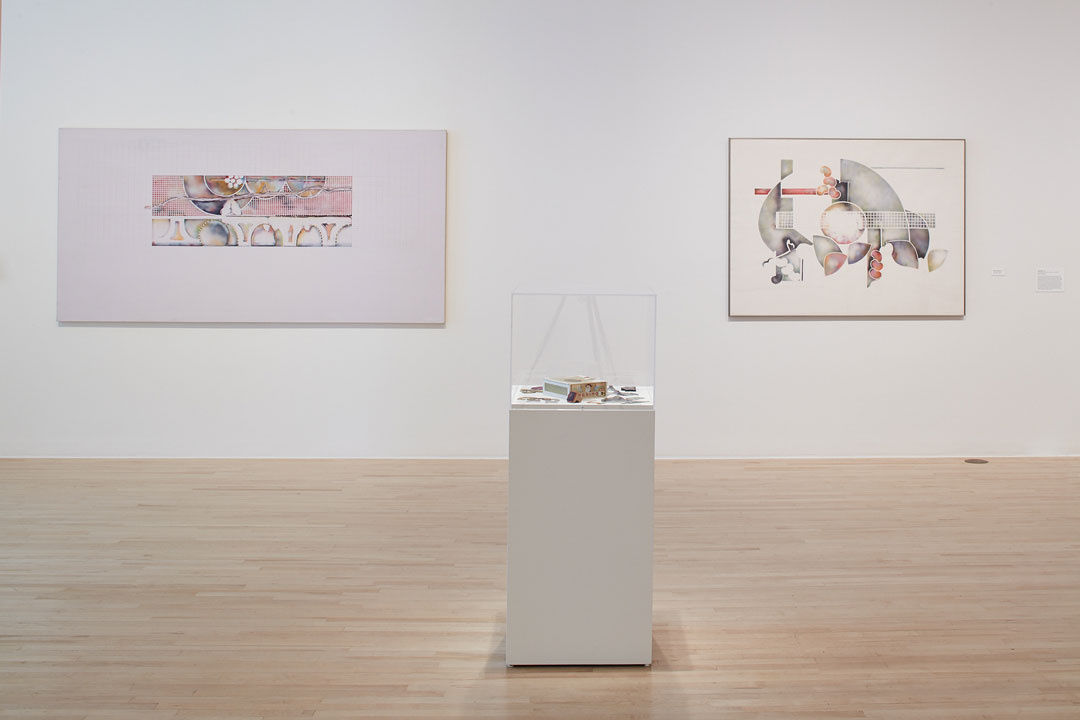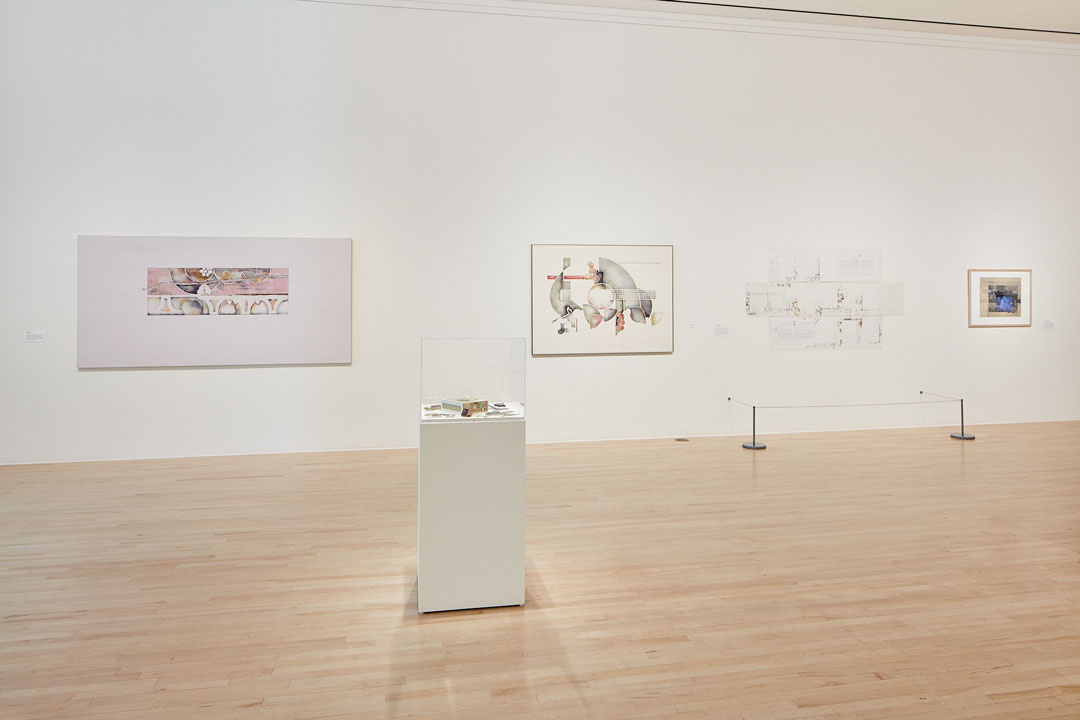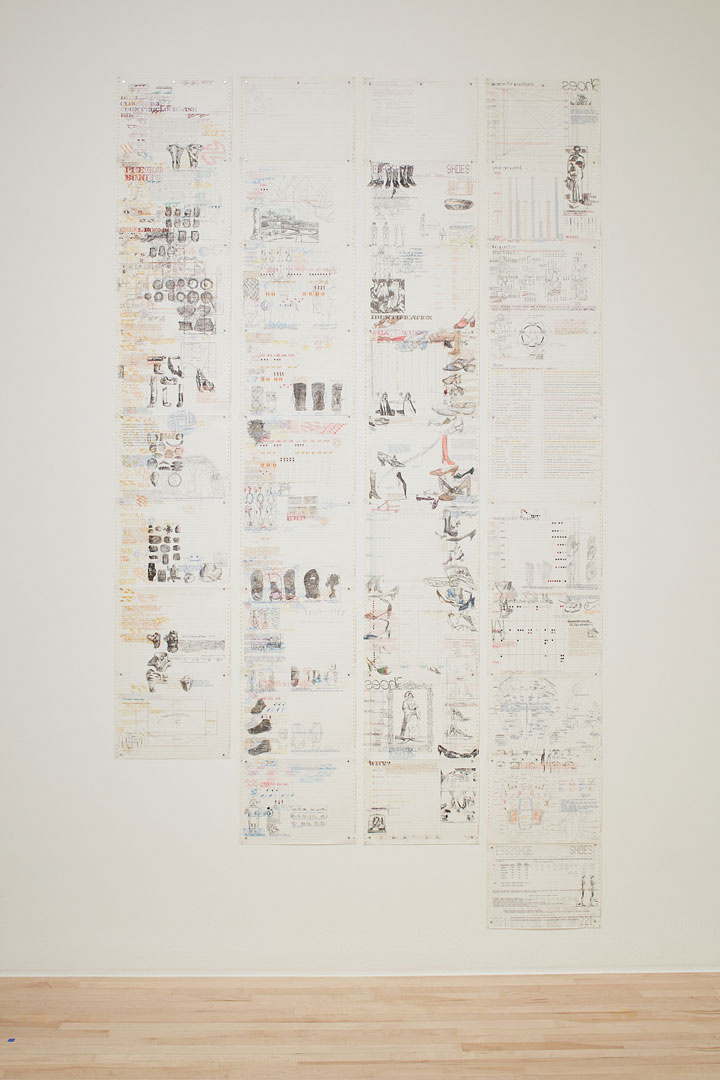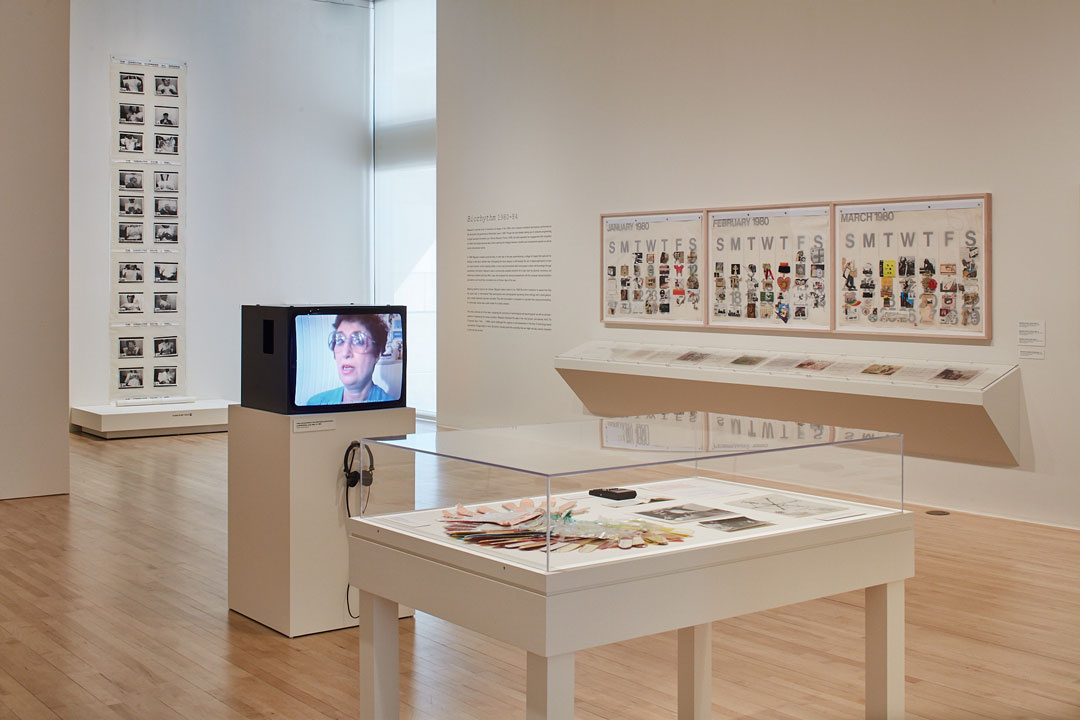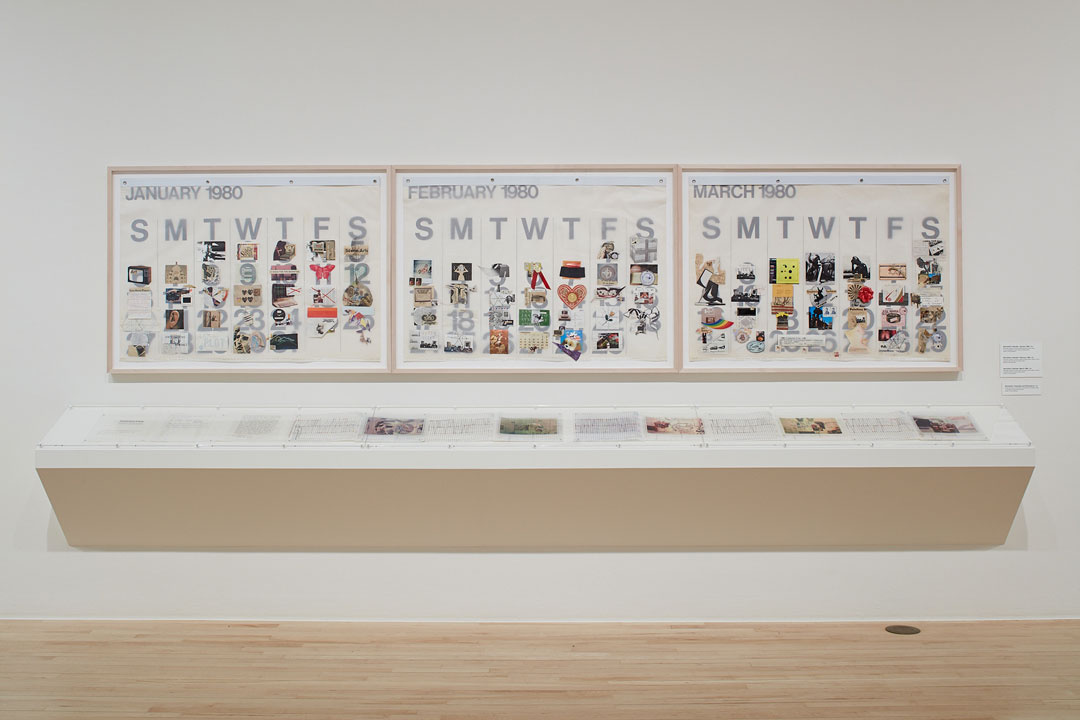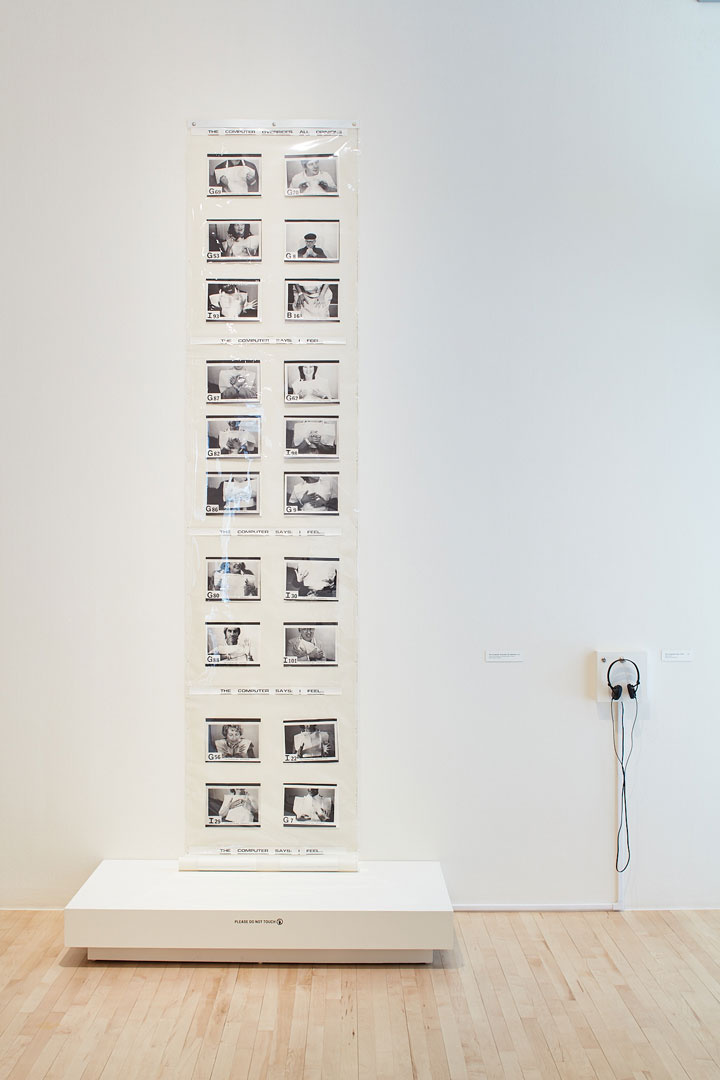In 1984 artist Sonya Rapoport imagined a future fantasy world in which we consult computers to assess how we feel. Using data gathered at her 1983 interactive performance at WORKS/San José, Rapoport created a fictional computer program that could dictate participants’ moods. Computer Says I Feel . . . (1984) was the third phase of the multiyear project Biorhythm (1980–86), for which she collected and analyzed personal data through both self-assessment and technology-based calculation. Using then-popular biorhythm computers to measure and plot users’ emotional, physical, and intellectual states and comparing the data to personal accounts—including verbal statements made by performance participants and her own diarylike pictorial collages made daily over the course of a year—Rapoport charted the correlation between computed and personal assessment. Her Biorhythm project questions the reflex that cultural theorist Jeanne Randolph described: our primary assumption about technology being that it works.
Rapoport’s early exploration of computer-human interaction suggests an enthusiastic but ambivalent relationship to technology. The artist’s career-long interest in linkages between systems and the self incited her pioneering computer-based practice, as well as work with symbolic language, data collection, and the aesthetics of scientific and computer data representation. In the 1960s she created a personal iconography with stencil shapes influenced by reproductive anatomy models and botanical drawings. Using spray acrylic and graphite, she layered her icons with grids and sinuous lines that she adopted from found survey charts and medical imagery. She produced large-scale paintings like Beginning (1974)—now in SJMA’s permanent collection, having been shown in a solo exhibition at SJMA the year of its completion—and drawings made on computer printout paper to explore feminist themes and synthesize knowledge from disparate fields such as chemistry, politics, and psychology.
Sonya Rapoport: Biorhythm focuses on a decade of rapid transformation in the artist’s practice—from that first SJMA exhibition to her interactive performances. Charting the transition from abstract painting to computer-based work, the exhibition considers the artist’s prescient exploration of computer-collected and -analyzed personal data and its aesthetic and cultural implications.
Sonya Rapoport (1923–2015, born Brookline, Massachusetts; lived and worked in Berkeley) received an MA in painting from the University of California, Berkeley, in 1949. She had her first solo exhibition in 1963 at the Legion of Honor, San Francisco. The subject of late-career retrospective exhibitions at Kala Art Institute, Berkeley (2011); Mills College Art Museum, Oakland (2012); and Fresno Art Museum (2013), her work can be found in the Bay Area public collections of the Berkeley Art Museum and Pacific Film Archive; Mills College Art Museum; San Francisco Museum of Modern Art; and San José Museum of Art. Rapoport was a frequent contributor to Leonardo, an art, science and technology journal published by the MIT Press.
Sonya Rapoport: biorhythm | Catalog
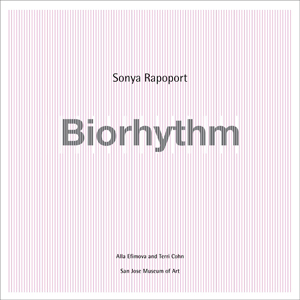
Purchase the catalog that was co-published by the Sonya Rapoport Legacy Trust and SJMA on the occasion of the exhibition Sonya Rapoport: biorhythm (Feb 7–Sep 27, 2020) curated by Kathryn Wade, with essays by Wade and Farley Gwazda. Get your copy at the Museum Store.
Video: Gallery Talk | Sonya Rapoport: biorhythm [Online]
SJMA assistant curator Kathryn Wade held a gallery chat online and was joined by two Rapoport scholars Terri Cohn and Alla Efimova. This event was originally scheduled to be held on-site, in the gallery, but shifted online due to the City's shelter in place ordinance. It was held on April 30, 2020, from each speaker's respective homes.Support
Sonya Rapoport: biorhythm is supported by the SJMA Exhibitions Fund with a generous grant from the Myra Reinhard Family Foundation, and contributions from Wanda Kownacki, and Hildy Shandell Beville and Ross Harwood Beville.
Programs at the San José Museum of Art are made possible by generous support from the Museum's Board of Trustees, a Cultural Affairs Grant from the City of San José, the Lipman Family Foundation, Yvonne and Mike Nevens, Facebook Art Department, the Richard A. Karp Charitable Foundation, The David and Lucile Packard Foundation, Adobe, Yellow Chair Foundation, the SJMA Director's Council and Council of 100, the San José Museum of Art Endowment Fund established by the John S. and James L. Knight Foundation at the Silicon Valley Community Foundation, and The William Randolph Hearst Foundation.
Press
San José Museum of Art show celebrates Sonya Rapoport, Mercury News
February 6, 2020
"Sonya Rapoport: biorhythm", a 21st Century Portrait, Digicult
February 10, 2020
Big Data, Metro Silicon Valley
February 19, 2020
